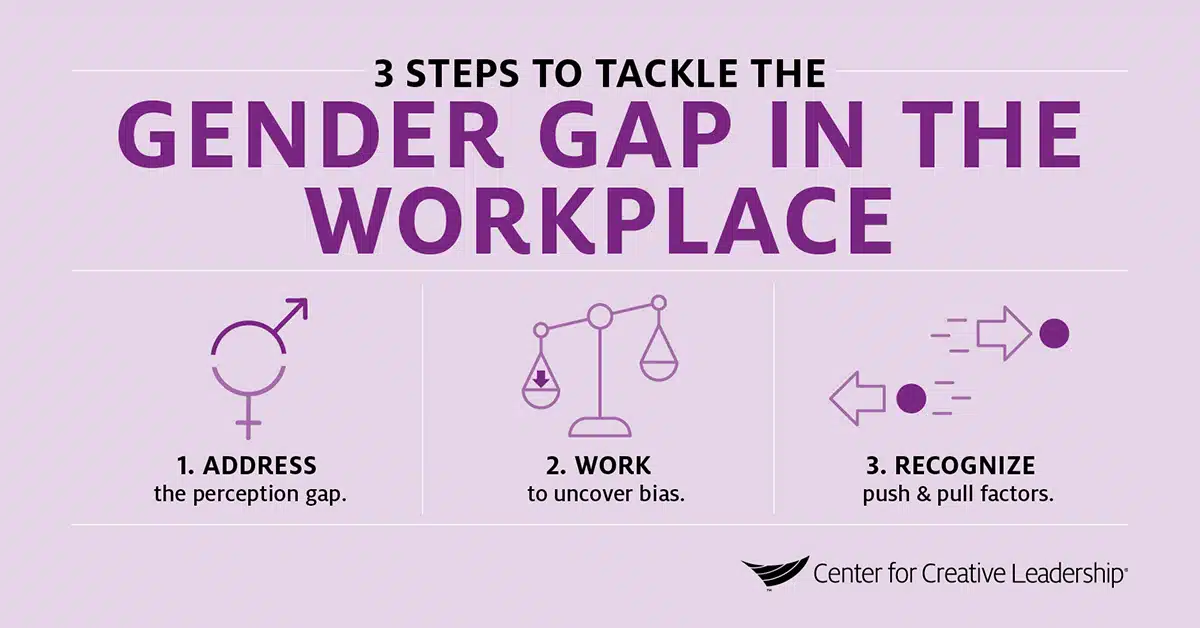Address the Issues Driving the Gender Gap in the Workplace
While efforts to close the gender gap in the workplace persist, we also face the reality that progress has continued to be underwhelming — especially with the challenges of the global pandemic. Women around the world have faced many setbacks throughout the COVID crisis, as they struggled to keep up with increased caregiving needs and other domestic demands, which have historically been unevenly distributed between genders.
In 2020 alone, there was $800 billion in lost income for women around the world, according to Oxfam International. Many women who dropped out of school or lost their jobs won’t go back, and UN Women reported that COVID will widen the poverty gap between women and men, with a projected 47 million more women and girls below the poverty line due to the pandemic and its fallout. All of this contributes to what has been coined the “SHEcession,” with substantially more job losses for women than men across the world.
For women remaining in the workforce, the virtual world of work has made it more difficult to gain exposure and advance their careers. It’s expected that without intervention, gender equity outcomes will worsen in the new hybrid workplace.
Reversing these trends now is critical to continue cultivating a fair and equitable society that will take advantage of the unique strengths that both women and men bring.
3 Steps to Start Tackling the Widening Gender Gap in the Workplace
What It Will Take for Organizations to Drive Substantial Progress Over the Next Few Years
1. Address the Perception Gap First.
Gender equity in the workplace is a systemic issue and requires the organization as a whole to evaluate wage gaps and unfair practices when it comes to opportunities and promotions. To make lasting change, leaders must first uncover where gaps may exist in the perception of inequities, and then work to create an inclusive culture where all employees feel valued, respected, and safe.
Our research study on overcoming barriers to women’s leadership showed clear gaps in the way men and women perceive the gender gap in the workplace. Among our survey responses, 59% of men and only 37% of women reported that men and women have equal opportunity in the workplace — a 22% gap.
Our study revealed other areas where men seem to be less aware of the challenges faced by women. For each of the following statements, there was about a 30% gap between men and women respondents agreeing that:
- Organizations lack formal programs that support women’s leadership development.
- Male managers are less likely to hire women than men.
- Men in the workplace do not support women being senior leaders.
- Male managers are less likely to promote women than men.
Both men and women need to acknowledge the wage gaps and other unfair practices that exist, due to historical and social disadvantages over time that have prevented a level playing field. Without openly acknowledging these unequal opportunities, organizations will struggle to properly address them.
Fortunately, organizations can take action to help change perceptions about gender and diversity issues. One way to do that is to help overcome in-group bias by allowing opportunities for people to engage in spanning boundaries. In our study, many interviewees shared with us that their experience working across countries, and/or with people with diverse backgrounds, changed their views.
HR and Talent Development professionals should work to educate leaders on understanding social identity, which will allow them to consider people’s different lived experiences to help their teams achieve their full potential. Educating leaders on how to broaden their perception is important for tackling the widening gender gap, as the manager role tends to be the most critical for women employees and drives most of the opportunity for impact toward parity.
2. Uncover Bias to Create an Inclusive Environment.
Organizations can help uncover some of the biases that exist in the workplace in order to make progress on closing the gender gap. In our study, the perception gap mentioned above showed up consistently across a wide range of categories, from the prevalence of workplace sexual harassment to whether male managers are less likely to promote women than men. Women often face very real challenges in the workplace, but when these experiences go unacknowledged or are swept under the carpet, this contributes to the systemic challenges and sense of powerlessness that many experience.
Among our survey responses, only 44% of men agreed that there is a pay gap in most workplaces, compared to 72% of women — a 28% gap. The actual data on the wage gap is clear: the Organisation for Economic Cooperation and Development (OECD) has reported an average of 11.6% pay gap between men and women.
These gaps in perception reinforce systemic imbalances, where women are treated differently at work due to both conscious and unconscious bias. Gender stereotypes often create assumptions such as:
- “She wouldn’t want work that will require her to spend more time away from family,” or
- “Women bring too much emotion into the workplace.”
As a result, women receive fewer stretch assignments, are expected to be more qualified than men for the same role, and are more likely to get “glass cliff” positions — leadership opportunities that are high stakes and have a high likelihood of failure.
Organizations need inclusive leaders who can use multiple approaches to continuously unveil these biases. At the Center for Creative Leadership, we define an inclusive leader as “an individual who is aware of their own biases and actively seeks out and considers different perspectives to inform their decision-making and collaborate more effectively with others.”
Practical, systemic changes — like gender pay audits to transparently quantify and report on gender pay gaps — are needed. Another way to reveal unconscious bias and cultivate a mindset of inclusive leadership is to provide developmental experiences where both men and women leaders are encouraged to fully consider different perspectives.
Access Our Webinar!
Watch our webinar, Beyond Mentoring: The Critical Need to Sponsor Women in the Workplace, to learn the importance of sponsoring women and elevating them to more prominent leadership roles to leverage their talents and experience.
3. Recognize Both the Push and Pull Factors.
For too long, we’ve been focusing on changing women, rather than changing systems. Uncovering the perception gap and biases that exist in the workplace are critical first steps, but they are just the beginning. We also need to take action to address the many challenges that women face, which often manifest in what we call “push” and “pull” factors, which we also discussed in our research study.
Pull factors are internally driven — limitations that women place on themselves; the inner voice that says, “I can’t do it,” that holds women back.
Push factors, on the other hand, are externally driven, arising from systemic obstacles like gender role expectations and family responsibilities.
Intertwining in complex but subtle ways, the push and pull factors shape the context in which women live in every day. Organizations can make strides toward positive, systemic change by considering the following:
- Identify sources of push and pull: To what extent are push factors vs. pull factors creating barriers for women leaders to progress in the organization? To better understand the lay of the land, consider deploying anonymous surveys to the women in your organization, tapping Employee Resource Groups centered around women professionals for insights, or holding open forums where women can voice their experiences.
- Make plans to address the push factors: After collecting insights from the women in your organization, determine the top 3 push factors that exist, and the actions you can take to begin addressing them. These will likely be systemic changes related to processes like removing gender bias from recruitment, retention, and career advancement.
- Provide resources for the pull factors: While every woman will have a unique set of pull factors, determine if there are common themes that arise among the women in your organization. What are the programs or mechanisms needed to help women overcome the top 3 pull factors? That could look like skill-building programs to help women gain confidence as leaders, or broader efforts to build psychological safety into the workplace, giving women the best environment to make their contributions seen and heard.
The way in which we tackle these push and pull factors may be different in each organization, but what’s certain is that organizations must fast-track efforts to remove the barriers.
Close the Gender Gap in the Workplace by Committing to Action
Tackling the widening gender gap in the workplace won’t happen overnight. Women’s leadership challenges are embedded within and tied to larger complex systems, and sustainable change will require purposeful interventions and broad organizational support. Now is the time for organizations to begin the work to update their culture and systems to give women leaders the resources and support they need to excel.
Whether it’s with a dedicated effort to drive mentorship and sponsorship for women in your organization, educating all employees on how to become better allies for underrepresented groups, or providing custom women’s leadership development training, the most important thing is to get started now.
Show the women in your organization that you value their expertise and contributions and are ready to support them by addressing the root causes of barriers to equity.
Ready to Take the Next Step?
We can help your organization overcome the gender gap in the workplace with a customized women’s leadership development program. Or, partner with us to create an organizational culture where all your talent can thrive with our Equity, Diversity & Inclusion practice.











